Fresco painting is the oldest technique of painting. Its roots go deep to the period when homo sapiens were in the survival phase and living in caves. However their objectives were different. Objectivity and subjectivity has been changing from time to time and region to region. The durability of fresco painting can never be challenged and it stays thousands of years. No other painting medium could survive that period. It can tolerate greater degree of heat and environmental factors.
In ancient times earthen colors were used to apply on limestone walls of the caves. It became part of the surface and still exists even after thousands of year. In the beginning a limited palette was available which was consisting of oxides of iron. In later periods more shades were introduced in the black and red palette.
It is believed that the art work during the cave age was for the purpose of magic practice. This might be true because man was passing through the survival period in which he had many challenges to face. The danger of wild animals and natural calamities was most common.
Secondly the availability of food was also scarce. Main food source was hunting however it involved many dangers. So in order to get successful in their expeditions they might perform any kind of rituals. One of the assumption associated with art for rituals is that the art was discovered in very deep and darker portions of the caves where there is less access. These portions might be regarded as early temples. The second assumption which is associated with rituals is that they had painted animals with holes and arrows in their body. They might be believing that it could help them to throw their weapons targeted. |  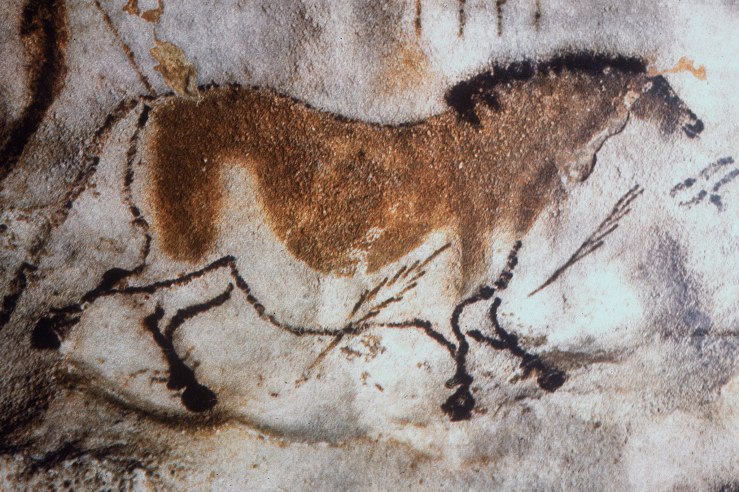 Source: National Geographic |

The second objective is associated with conveying the knowledge. It is believed that those people were not using any formal language for interaction. There might be some gestures but it might not help In documentation. The art was the only medium to convey certain knowledge to the next generations.

Egyptians have also used fresco as a medium to paint their tombs interiorly. However their purpose was quite different. Egyptian art was never meant to be seen by public. According to Egyptian mythology death is only a short momentary phase between life and afterlife. Immortality could be achieved by going through certain phases one of which is mummification. The whole subject painted in a subterranean chamber was the part of the chain of transition.
Egyptians used secco fresco to express their thoughts. Gums and glues were achieved from plants to add in. there are evidence of using casein (made from milk solids) as a binder as well. Their style of painting is quite illustrative which still exists in miniature paintings. In this technique of composition maximum information is conveyed going into four dimensional imagination. For example if face, waist and limbs were painted in a profile view, shoulders, torso and eyes were painted in frontal view. The objective was to draw from the most recognizable angle.
Early Roman period of Fresco painting is amalgamation of Greek and Minoan art. There purpose were also not so different from their ancestors i.e. for religious aspects. However they also ornamented the palaces as well by using fresco murals. Soon after biblical references took their space. | 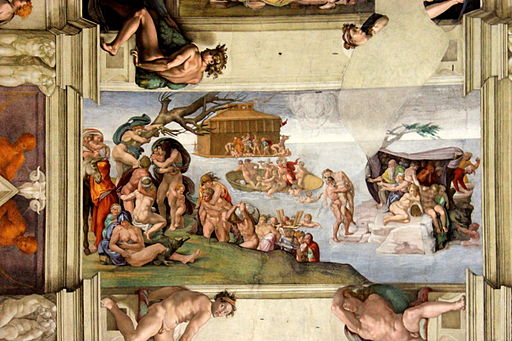 Source: Italianrenaissance.org Noah and the Flood (Sistine Chapel) |
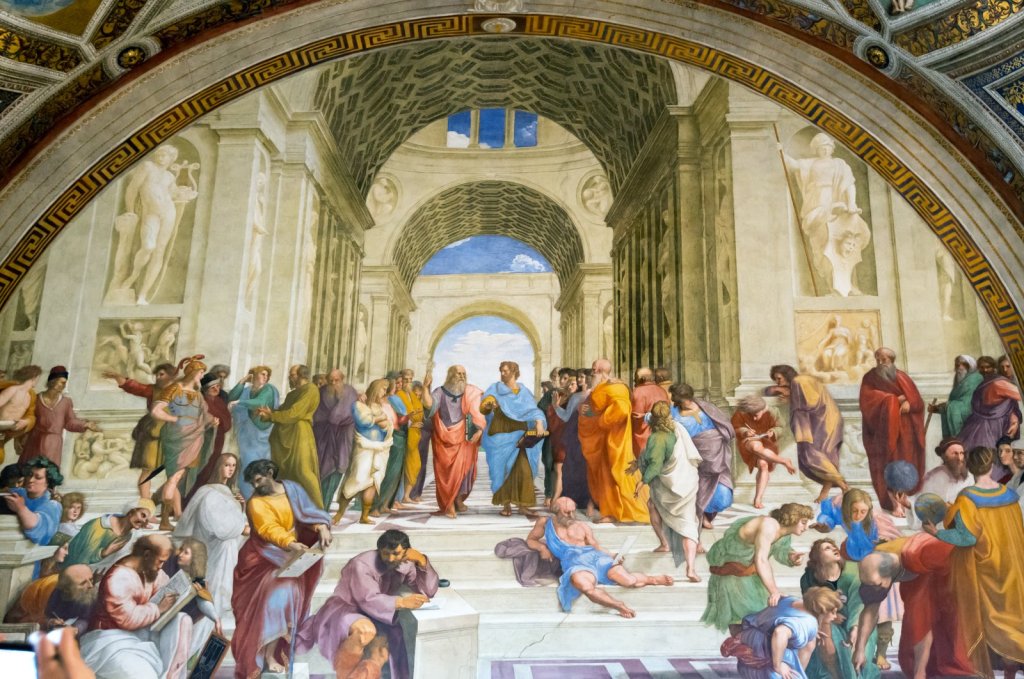
School of Athens by Raphael. Source: gettyimages.com
However Romans added more details in painting by introducing more tones and by improving the technique. They introduced mezzo fresco in which pigments are applied on partially dried intonaco. Work done during the dark ages( medieval period) of Europe is not so mature. However during renaissance the art of fresco painting attained its peak level. Soon the mezzo fresco surpassed the buon fresco (true fresco) and became most favorite medium. There are many names associated with the art of fresco in roman period. The most prominent is Michelangelo, Leonardo da vinci, and Raphael. Michelangelo is famous for his sculptor skills. However when he was commissioned by the church to paint the Sistine chapel, he had no choice but to achieve skills in another dimension.
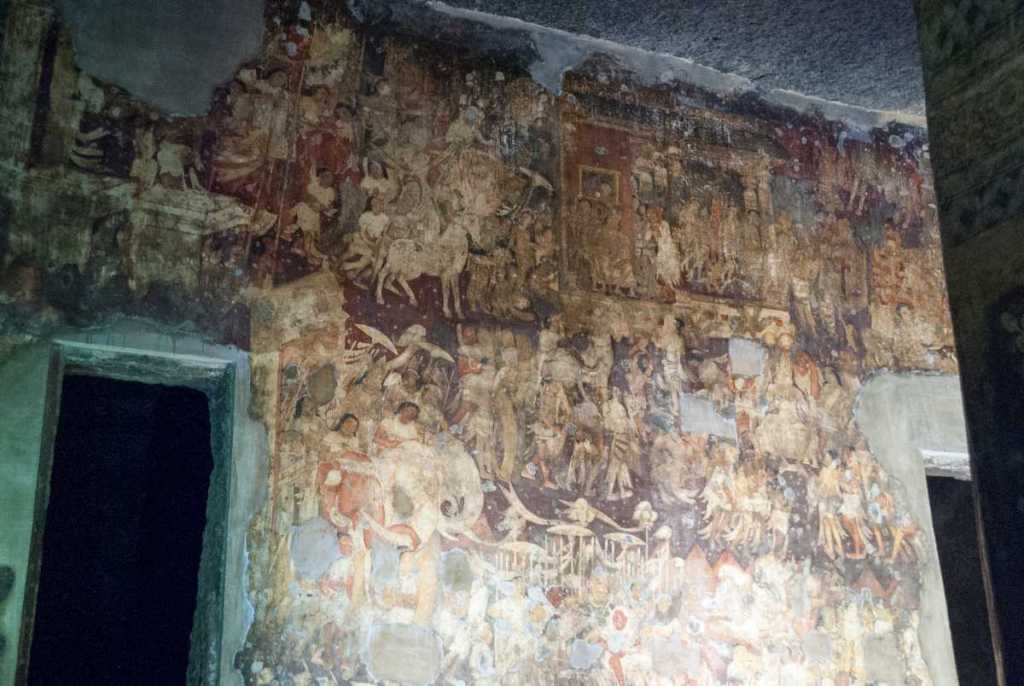
In Indian subcontinent a massive series of caves was discovered. It contains a large collection of stone carved huge statues and wall paintings. These were painted between 200BC to 100AD and later in 400-500AD. However there is debate about the process and materials of Ajanta painting, however, it is difficult to pin point or draw a specific boundary about painting process and materials. The notions of some archaeologists is that all these are the real Italian fresco (Fresco Buono) whereas, some of them have a view point that it is not the pure fresco, and is more close to Italian term “Secco Fresco”.
However there is a difference between art in Ajanta caves and art in Sistine chapel as far as arricio is concerned. In Ajanta caves it is prepared different. They normally prepared the arricio layer with the soil, stone dust, and cow dung. Sometimes they even used the husks of corn to give strength to arricio. However antonico was laid similarly as roman technique.
Whatever it is whether it is buono fresco or secco fresco, It laid the foundation of ancient Indian arts. The subjects are about the teachings of Buddhism.
In Mughal period fresco was extensively used to ornament the palaces and mosques. It became integral part of Mughal architecture. Complex geometrical patterns were created and amalgamated with the floral patterns to create amazing pieces of art. They took the art of fresco painting to a new height. Most of their work is based on buon fresco in which pigments are applied on wet antonico. | 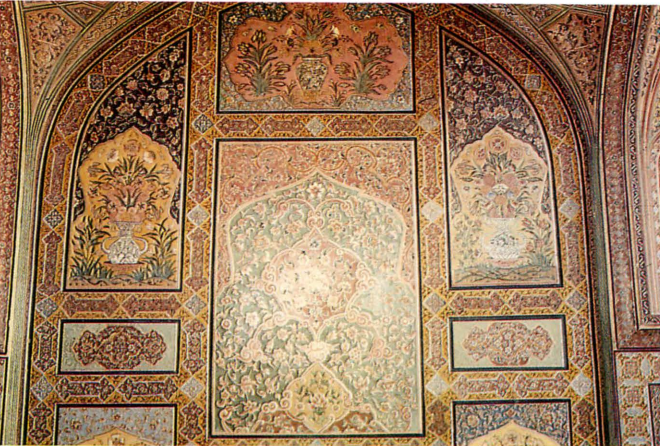 Vases on the dish surrounded by landscape: Wazir Khan Mosque Source: The Origin of_Fresco Painting in the Province of the Punjab and Its Development During the Mughal Period. |
Wazir khan mosque in Lahore, Pakistan is the most rich source of Mughal era fresco paintings. It depicts a variety of subjects. Metaphorically most of the symbols of heaven are painted here to establish a linkage. The specialized structure, which is linked with islamic architecture, is called “Muqarna”, in which complex geometrically patterns are constructed physically which are later painted in the same contours.
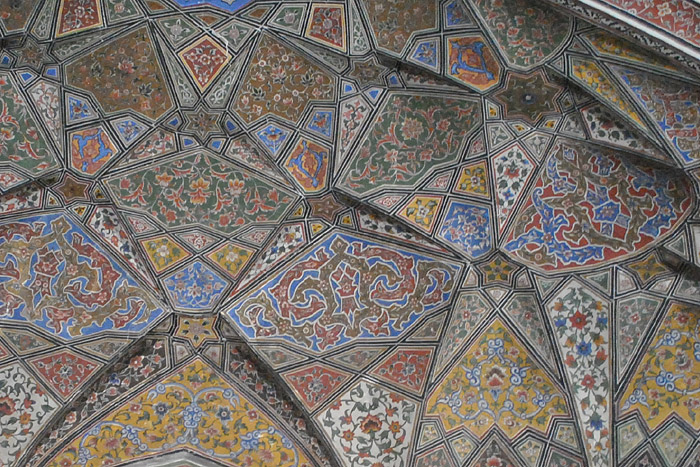
Similarly Begum shahi mosque which was built by Jehangir in commemoration of his mother is another rich source of fresco paintings. The complex geometrical patterns drawn there astonish the one who observes. This work dates back to 1611.
The technique of fresco painting is based on chemical processes which are described by chemistry. It starts from the thermal degradation of lime stones. Chemical composition of limestone is CaCO3. When it is thermally degraded in lime kiln, it convert into CaO by releasing carbon di oxide. CaO is called quick lime. When it is dissolved in water, it converts into Ca(OH)2 which is lime. However converting the quick lime into lime is highly exothermic.
Lime which is obtained in this process contains certain chemicals and impurities which must be removed before using. Otherwise it will corrode the pigments applied with the passage of time. For this purpose once it is silted with the help of piece of cloth and then adding sufficient water. Density of lime is higher than water and settles in the bottom with the passage of time and a gradient is formed. The upper water is rinsed and new water is added. This process is repeated several times until lime becomes free of chemicals.
Pigments that are used in fresco painting are the earthen colors mostly. Some oxides of metals and minerals are also used. When pigment is applied on the surface of lime, which is called antonico, it absorbs the pigments. However for buon fresco it is necessary that pigments are applied when the lime layer i.e. antonico is fresh and not dry. When the painting is complete, it undergoes chemical reaction. First of all moisture in lime surface evaporates turning Ca(OH)2 into CaO. In the next step CaO reacts with Carbon di oxide present in the air and converts into CaCO3 which is hard surface like a stone. The colors absorbed by the lime become permanent part of the surface. Their permanency is the same as the patterns in the marble.
The other techniques which are derivates of buon Fresco includes secco fresco and mezzo fresco. In secco fresco pigments are applied on a dry surface and a color binder is used to adhere the pigment with the surface. This binder is usually any oil or varnish. This technique is not permanent and chips off with the passage of time.
The mezzo technique is between the secco and buon fresco. In this technique pigment is applied on partially dried surface. This technique was developed between European renaissance. In popularity it surpassed the buon fresco.
Fresco painting has a glorious and splendid past attach with it. During different periods of time different movements started in the world to revive the fresco painting technique. One of such movement was the renaissance of fresco painting in Mexico. The most famous artist which contributed in this was “Diego Rivera”. He left so many examples of fresco master pieces.
During the similar kind of period another movement was started in United Kingdom to revive the fresco painting technique. However with the passage of time this technique is diminishing all over the world. It is losing its mural aspect. In certain institutes it is taught as an ancient technique of painting on a very small scale. Usually it is being carried on small slabs of ceramics and plaster of Paris.
Gallery:
 Ceiling: Sonehri Mosque, Lahore Source: PakistanToday.com.pk |
 Wazir Khan Mosquie Source: walledcitylahore.gop.pk |
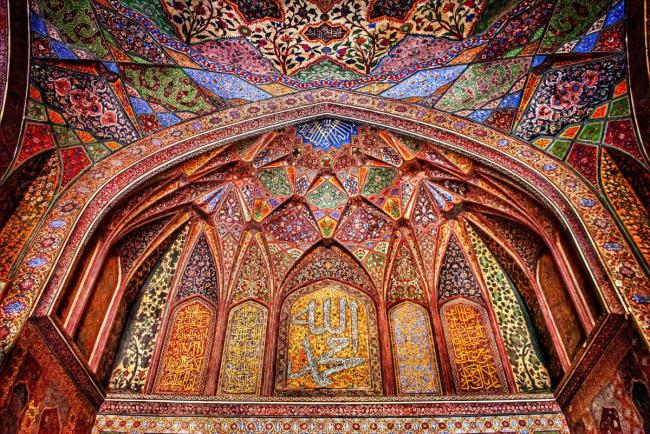 Wazir Khan Mosque Source: walledcitylahore.gop.pk |
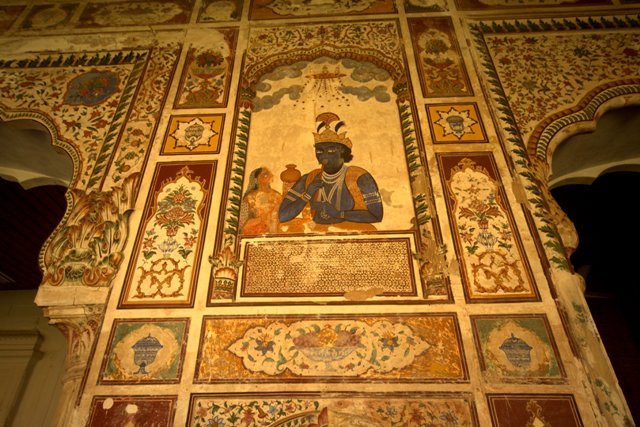 Fresco Inside Chuna-Mandi College, Lahore Source: PakistanToday.com.pk |
References:
Teeter, E. (1994). Egyptian Art. Art Institute of Chicago Museum Studies, 20(1), 15-31. doi:10.2307/4112949
“Michelangelo’s Painting of the Sistine Chapel Ceiling.” ItalianRenaissance.org, http://www.italianrenaissance.org/a-closer-look-michelangelos-painting-of-the-sistine-chapel-ceiling/.
“Artists Materials – History and Technique of Fresco Painting – Natural Pigments.” Default Store View, http://www.naturalpigments.com/artist-materials/history-technique-fresco-painting/.
Centre, UNESCO World Heritage. “Ajanta Caves.” Gallery – UNESCO World Heritage Centre, whc.unesco.org/en/list/242/gallery.
Blankenbehler, Benjamin. “Ajanta Caves, Ajinṭhā Maharashtra India.” Architecture Revived, 11 Nov. 2015, http://www.architecturerevived.com/ajanta-caves-maharashtra-india/.
Editor, The. “The Origin of Fresco Painting in the Province of the Punjab and Its Development During the Mughal Period.” Academia.edu, http://www.academia.edu/39112892/The_Origin_of_Fresco_Painting_in_the_Province_of_the_Punjab_and_Its_Development_During_the_Mughal_Period.

